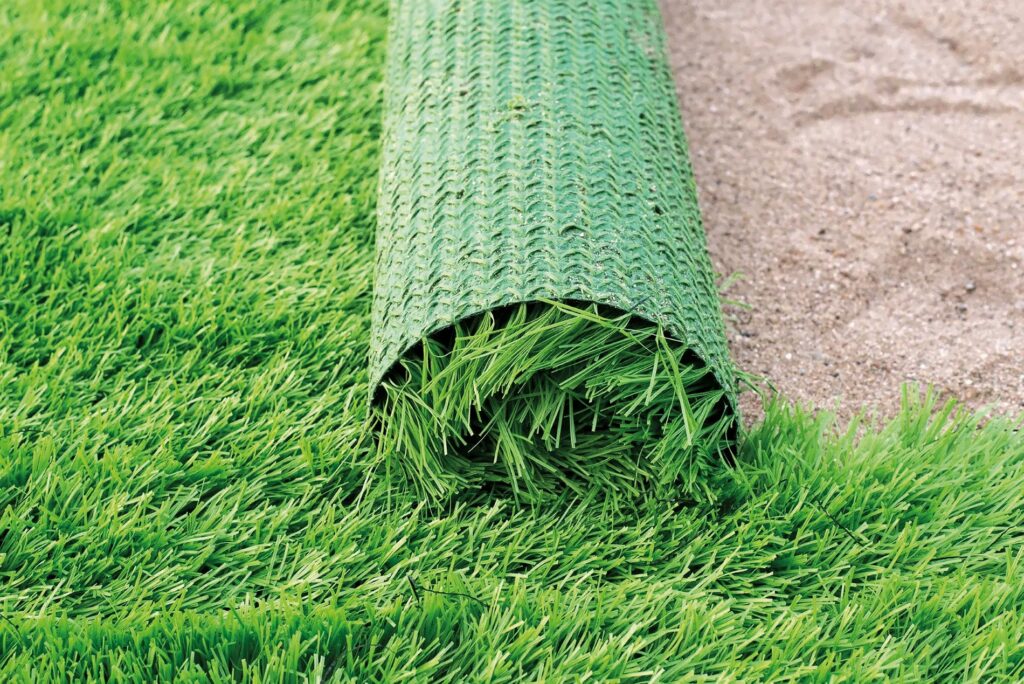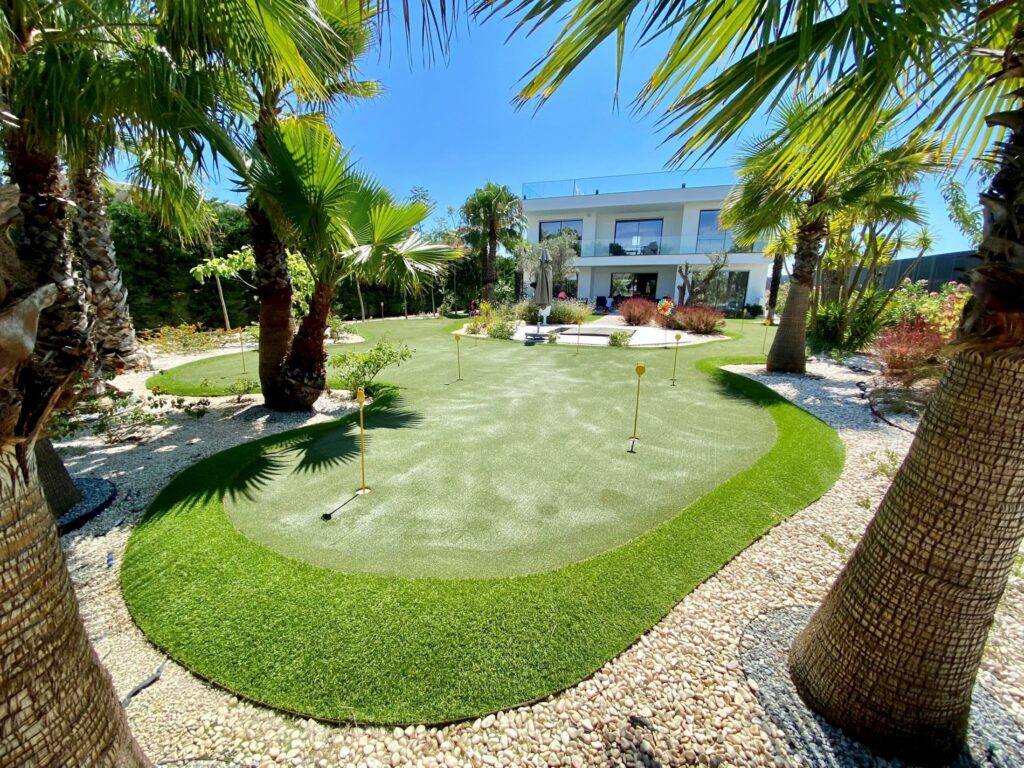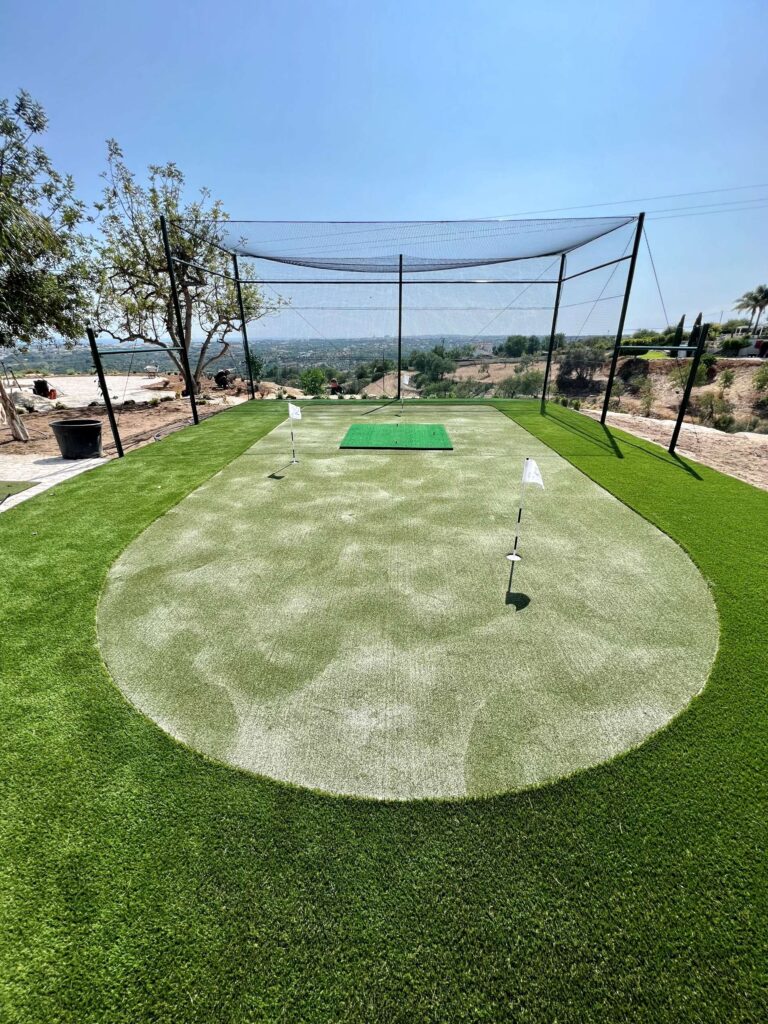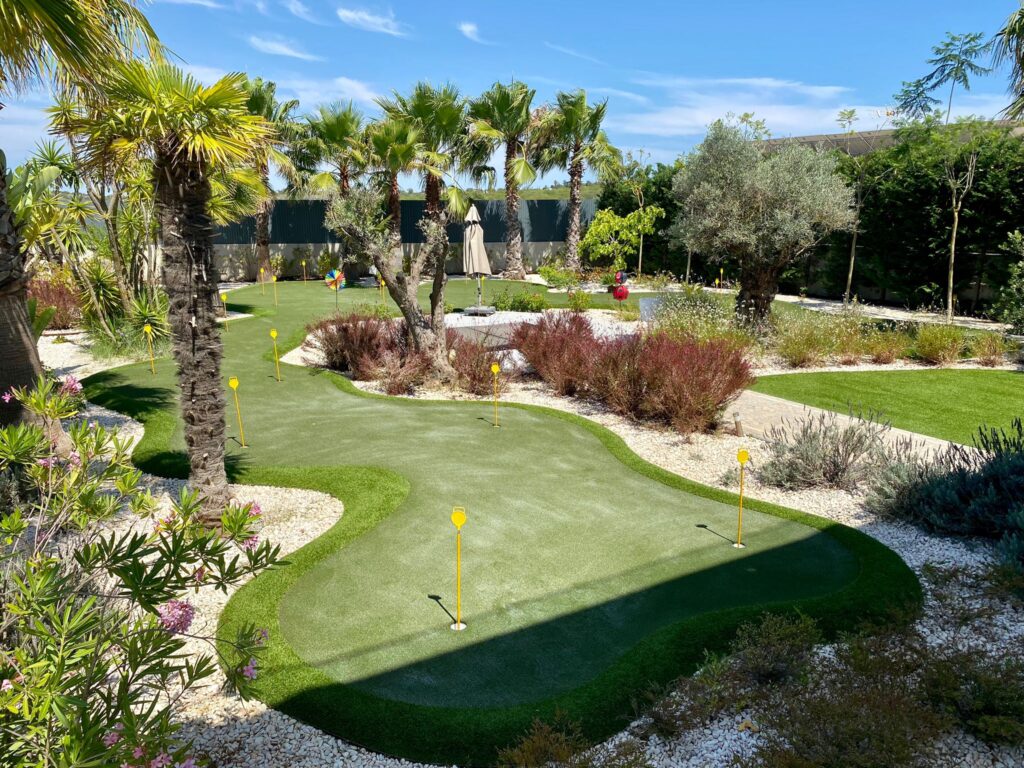Rolling out the green carpet
– November 12, 2024 | Text Alexandra Stilwell

Famous for having “over 300 days of annual sunshine”, the Algarve is indisputably one of the world’s top golfing destinations.
However, with rising temperatures and the lack of water affecting the region for several years, greenkeepers have been facing new challenges to keep courses green sustainably.
One growing trend could potentially bring a little respite. Even though nature lovers scorn it, synthetic grass is experiencing a landscape boom in the Algarve.

In areas like the Golden Triangle, affluent homeowners are investing in artificial grass tennis and padel courts as well as putting greens, a fun and exclusive way to practice sports at home and add value to the property.
And they’re not the only ones. According to Martin Edwards, founder of Grasshopper Greens, “most PGA players will have a synthetic green putting green in their private garden, such as Lee Westwood and Ian Poulter in England”, as these “very much replicate a natural PGA-type golfing experience”.
Based in Almancil, the Australian national started his synthetic grass business in the Algarve in 2005. Targeting top-tier customers, he began contracting with big companies such as Q Landscape in Quinta do Lago and Vale do Lobo, and over the last 20 years, he has seen the artificial grass business grow for several reasons.
“Since COVID, there has been a massive change in the level of business coming through,” says Martin Edwards. “A lot of people couldn’t travel and were having putting greens and padel courts put in. And now, with the drought problems, people are being forced to change to synthetic lawns because the stress on the water resources is catastrophic. You can’t keep building large houses with big gardens and not think about where the water will come from.”
The construction of a desalination plant in the region, which would help replenish water supplies, may be in the pipeline, but it will take years to build, if and when it is approved. And although there are alternative grass varieties, such as Seashore Paspalum, which has earned a reputation for sustainability thanks to its heat and salt tolerance, they require more maintenance than synthetic grass.
“Natural grass greens need to be rolled and cut every day,” points out the artificial lawn expert.

On top of being low maintenance, the quality of artificial grass has considerably improved over the years.
“Many people still refer to synthetic grass as AstroTurf, a brand that started 60 years ago.” Making things clear, Martin proudly shares that he only works with “the most expensive, high-end grass” manufactured in Holland. It may be double the price of Chinese options, but he believes it is worth every penny.
In terms of sustainability, products are evolving, and progress is being made. Some synthetic grasses already include partly recycled materials, whilst others are already fully recycled, “but [the quality] is not quite there yet, and it’s still very expensive”, he admits.
But whilst some may be praising this low-maintenance alternative to natural grass, it got some bad press in 2023 when the European Union announced a series of measures to reduce microplastic use in the various member states due to their nefarious environmental impact. According to Martin, this came about “because many schools and stadiums across Europe have synthetic football pitches filled with recycled tyre chippings, and some of the particles were so fine they were being inhaled”. The good news for artificial landscaping is that the new restrictions only apply to surfaces with granular filling material containing microplastics, such as football pitches.

So, just how ‘green’ is synthetic grass? And should it be used for areas larger than a putting green?
Horticulturists such as British TV presenter Monty Don see synthetic grass as “an aberration”, as he believes it is the opposite of gardening – “it cuts us off from the natural world”, he said in an interview with The Times.
This may be true in northern countries where it rains frequently, and grass grows effortlessly. However, in southern countries, where climate change is felt more severely, alternatives must be considered.
When it comes to golf, experts see a future for artificial turf in greens, tees, and training areas because this is where the highest maintenance costs are.
A rough estimate indicates synthetic turf maintenance costs could be as low as a tenth of that of natural grass. Less time is required for the greenkeeping staff, and the machinery is also reduced, resulting in less emissions. However, the initial investment in synthetic grass surfaces is significantly higher than natural greens.
When it comes to getting the ball rolling for a private putting green, this type of project can set you back approximately €165 per square metre (plus VAT), “design and construction included”.
Built in an average of 10 days, an artificial green is a multilayer project that involves creating an aggregate base of various levels using specific techniques. To finalise and give the grass “a very realistic underfoot feel”, a foam underlay is placed under the artificial grass, which is then sand-filled to replicate a PGA standard green.
As for size, the expert recommends building a five by ten or twelve metres green, as one-metre to 10-metre putts are best for at-home training. “You’re not going to be looking to putt the 15- or 20-metre putts in one,” he says.
Using synthetic grass on fairways may not be a reality due to cost and potential environmental impact.
According to Professor Johannes Kollmann, who holds the Chair of Renaturation Ecology at the Technical University of Munich, contrary to natural soil, synthetic grass implies a “lack of cooling and carbon sequestration, reduced infiltration, reduced soil life and the release of microplastics”.
However, it is an option for small areas. In fact, artificial greens already exist on courses in northern countries such as Sweden and Switzerland, where golf cannot be played year-round because the grass goes dormant in winter.
To combat seasonality, greenkeepers install two adjacent greens, one for summer (natural) and one for winter (synthetic).
This “artificial greens only” trend appears to be heading south, not only because of climate change but because of maintenance.
Martin Edwards proudly shares that he recently did a project in the north of Portugal, at the private estate of a Portuguese billionaire, replacing the greens of a full-size nine-hole golf course with synthetic greens.
You might also like:
Here’s to 10 more! Clubhouse Algarve celebrates 10 year anniversary










